Discarded wires woven into a form-fitting dress. Windshield wipers transformed into a velvet mermaid gown.
These are products from the latest project by fashion designer Jeremy Scott, who is turning automotive scrap materials into standout high fashion pieces – or “car-ture,” as he calls it.
Unprecedented Materials
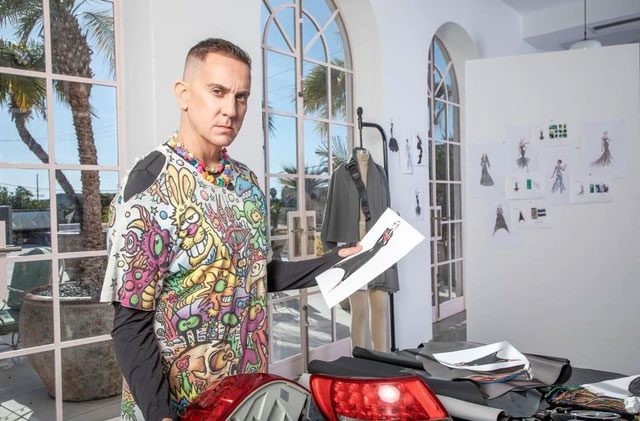
Jeremy Scott in his studio in Los Angeles, working on a high-fashion collection for Hyundai. (Photo: Hyundai).
Recently launched in Seoul, South Korea, this collection stems from Scott’s collaboration with automaker Hyundai. The company assigned him the task of recycling seat belts, tail lights, and even discarded wheel axles.
The handcrafted garments were showcased just two days after the luxury brand Moschino made headlines with the announcement that American designer Jeremy Scott would step down from his role as creative director after nearly a decade.
A well-known figure in the fashion world, Scott is recognized for his playful, irreverent designs—some of which incorporate unconventional materials, like inflatable pool toys.
Speaking with CNN from Seoul, the 47-year-old designer expressed his desire to “reassemble” scrap car parts into “something sculptural, inspiring, and standout.” He noted that the collection merges elegance with “something very urban.”
“When Hyundai approached me, I felt both honored and challenged. I loved the idea of creating something from materials I had never used before, particularly tail lights and seat belts. However, it shows that with creativity, you can breathe new life into anything,” Scott shared.
This project marks the “Re: Style” initiative by Hyundai entering its fourth year, where the South Korean automaker invites renowned fashion designers to recycle automotive scrap materials into fashion items.
The result is products like strapless dresses made from seat belts and bold outfits shaped from rearview mirrors. These items, seemingly unrelated to fashion, are transformed into unique, sophisticated products.
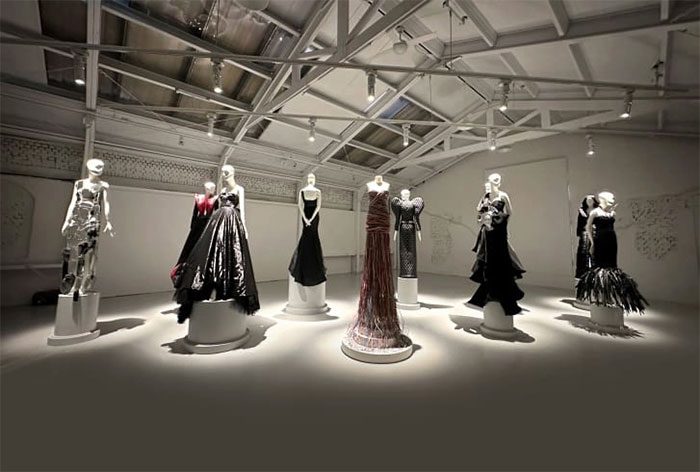
Dresses designed by Scott on display in Seoul, South Korea. (Photo: Hyundai).
Inspiration
Scott sourced parts from Hyundai vehicles at five junkyards around Seoul, where many cars from the 1980s and 1990s are found. Though often seen as a purveyor of pop culture, he grew up with a waste-minimizing mentality instilled by his grandmother.
According to Scott, he learned early on to reuse everything, such as using glass bottles as vases or for planting. His grandmother recycled items before it became a trend. As he grew older, recycling became a natural part of his life without much effort.
This is part of the reason Hyundai chose to collaborate with Scott. Sungwon Jee, Global Marketing Director of Hyundai Motor Company, noted that both the automotive and fashion industries are major contributors to environmental pollution.
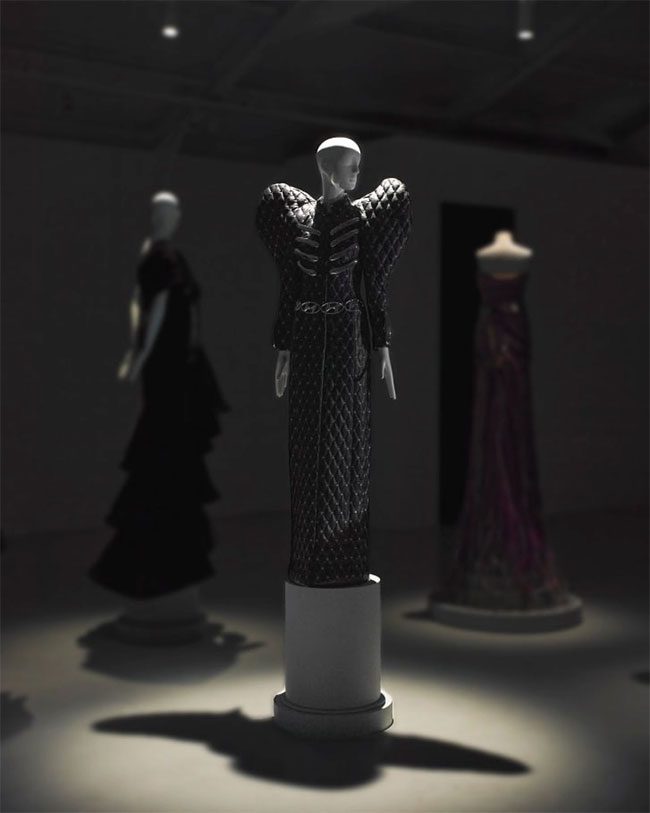
Capes made from various materials, from windshield wipers to seat belts. (Photo: Hyundai).
Jeremy Scott is a renowned designer who has turned ordinary materials into whimsical designs, creating stunning outfits that we could never have imagined. This fashion collection aligns with the company’s commitment to sustainability.
Scott’s creations are truly unique, showcased in Seoul for over two weeks. He admits that some items may be difficult to wear on any occasion, as they don’t conform to traditional styles. However, the designer believes they serve a greater purpose in providing inspiration.
This marks Scott’s second collaboration with Hyundai, a company that has announced plans to achieve carbon neutrality by 2040. Last year, during the FIFA World Cup, Scott used PET-derived polyester to create a line of soccer jerseys for Hyundai.
In a statement, Hyundai’s Senior Vice President Sungwon Jee said that Scott’s luxury fashion collection demonstrates that much of what we throw away can be reused and transformed into something beautiful through vision and talent.
Ensuring Sustainability
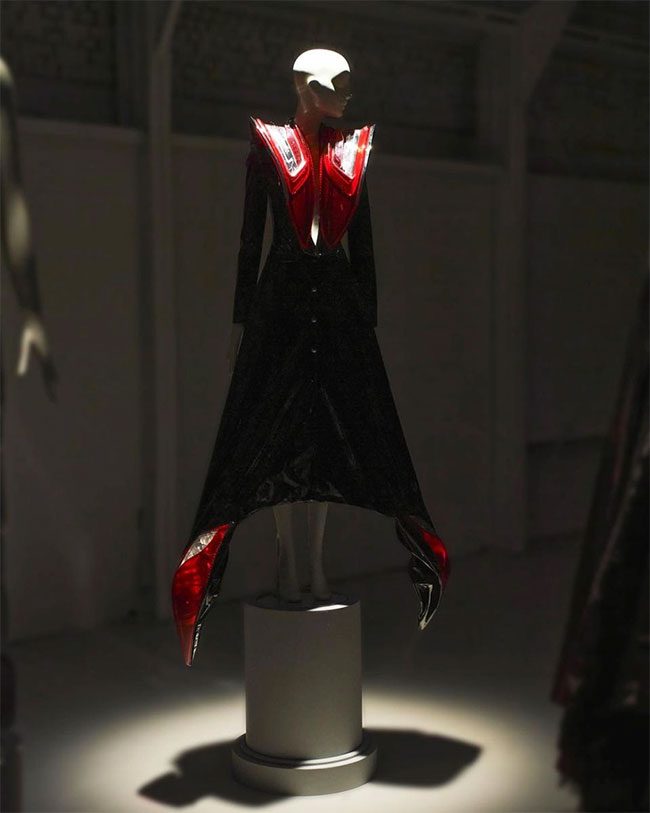
Hyundai car parts recycled into Jeremy Scott’s collection. (Photo: Hyundai).
Scott is regarded as one of the most creative figures in the fashion industry. He takes the most pride in the dress made from windshield wipers, believing it is fascinating to take a Hyundai wiper and transform it into a 1950s Paris-style dress.
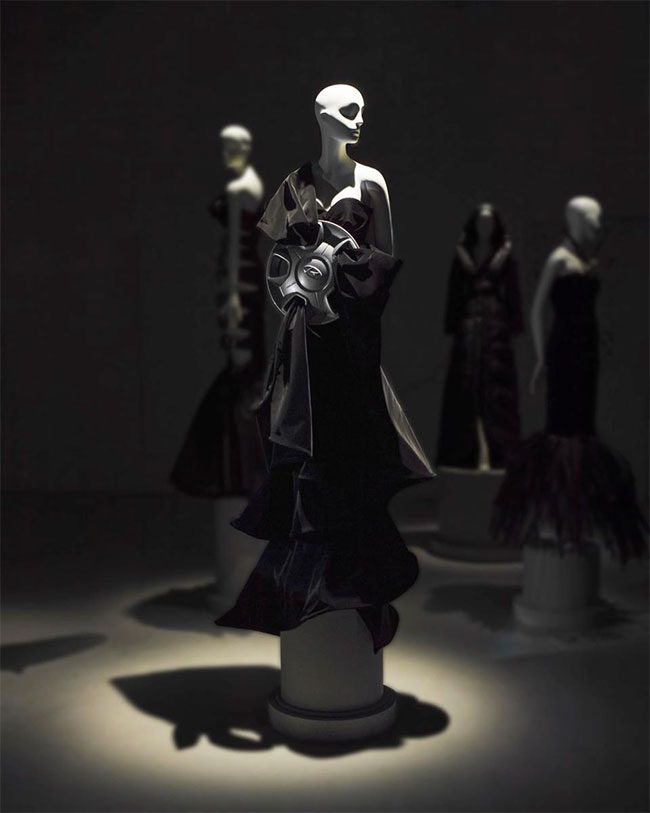
Hyundai car parts contributing to Jeremy Scott’s fashion collection. (Photo: Hyundai).
Scott joined Moschino in 2013, debuting his first collection for the brand in Fall 2014. He created collections imbued with pop culture, featuring fast-food logos, Barbie doll prints, and extravagant items like the chandelier dress worn by singer Katy Perry at the 2019 Met Gala.
Upon leaving his position as creative director at Moschino, he expressed feeling wonderful and proud of the legacy he left behind.
Looking ahead, Scott will embark on new projects. However, he emphasizes that sustainability will play a crucial role in any future endeavors.
“It will always be a part of our work as contemporary creators,” he asserted.


















































